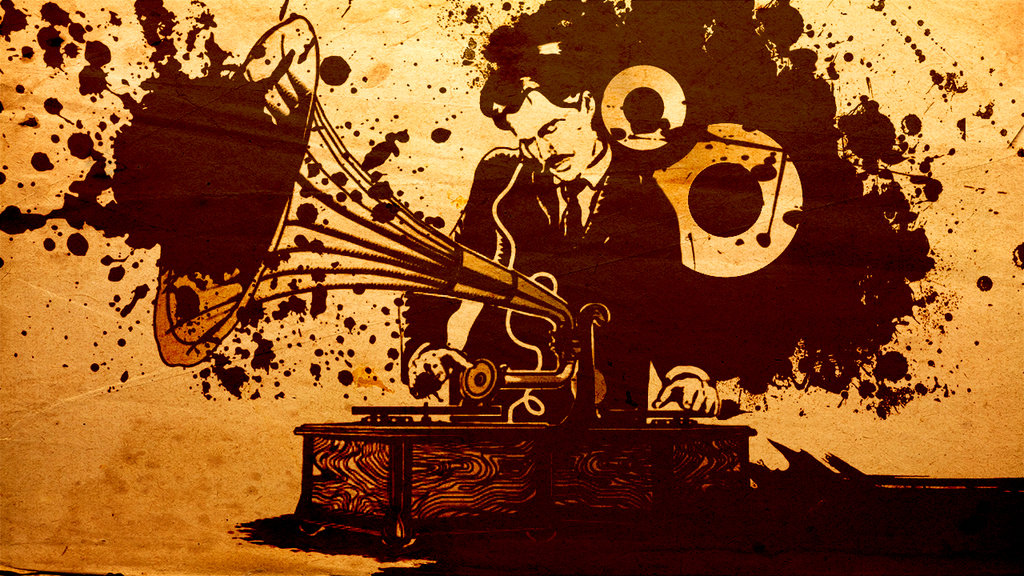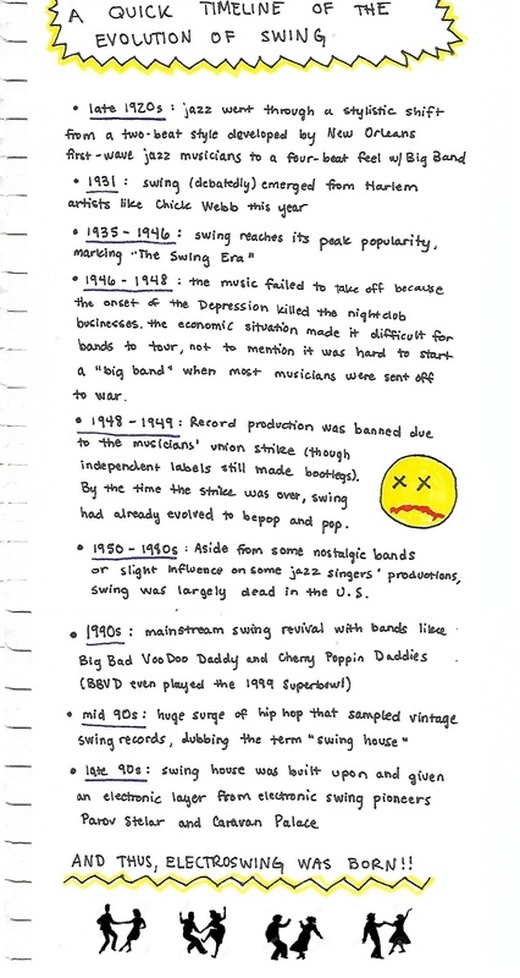|
Written by Parisa Eshrati Swing and its many iterations have worn many hats, but new inspirations from which to draw and artist innovations have taken the genre to new heights for the past century. Some say there's nothing new under the sun, that everything's recycled, while others revel in familiar sounds with entirely new beats, meaning, and structure. When asked what swing music was during an interview on the Bing Crosby radio show, Louis Armstrong replied, "Ah, swing, well, we used to call it syncopation — then they called it ragtime, then blues — then jazz. Now, it's swing. Ha!” We can apply this quote across most genres of music and other art forms; it says a lot about the creative process in general. Though some people would claim that creativity is dead because everything is just a rehash of prior work, I would argue that it’s possible for an artist to borrow an old idea and transform it to something unique. Let’s take the most current formation of swing music for example — electroswing. This genre originated in the mid-90’s and retains the live brass sections of early swing music but gives it a modern, electronic sound by combining swing samples with modern EDM, house, hip hop, and jazz. Electroswing has taken a genre that is unfortunately collecting dust in record collections and given it a completely new life while still staying true to vibrant swing energy. For the most part, this genre is widely overlooked in the U.S., though the influence is apparent in other areas of electronic music. Take for example the new Avalanches single, “Frankie Sinatra,” which samples a 1947 calypso/swing single from King Houdini and His Calypso Parliament. There was also that huge hit “We No Speak Americano” from the Australia duo Yolanda Be Cool that swept the airwaves a few years ago, but that repetitive and shallow remix (as catchy as it was) really does the genre no justice. Let’s take a look at a brief timeline of how electroswing came to be: Those two pioneering artists (mentioned above) are not only a great place to start for those who are interested in diggin’ into electroswing, but are also still my two favorite groups in the entire genre. Parov Stelar, who is largely credited to first inventing this genre, is an Austrian DJ and producer that incorporates house and breakbeat styles into his music. The other main pioneer of electroswing music, Caravan Palace, debuted in Paris around 2008 and peaked on the French album charts for 68 consecutive weeks. Interestingly, Caravan Palace doesn’t rely on samples to make their melodies. Singer Zoe Colotis remarks that “jazz standards have already been played a million times. It’s all about production and arrangements because electroswing is made by musicians.” Other artists, such as Chinese Man, Kid Koala, and The Real Tuesday Weld, also revive the passionate energy of swing music, but each with distinct techniques to make their own modern spin on a classic sound. The genre has also spawned off many subgenres, like nu jazz and new jack swing, which just shows the ever-evolving nature of swing energy. A lot of people claim that creativity is dying and that nothing is truly original anymore. It’s like the law of thermodynamics – nothing is new, just changed. It’s easy to understand this idea just by tuning in to a commercial radio station. Every song is just an obvious reformation of the last big hit before it. This monotony of ideas happens in other forms of media and art, too; almost everything that's coming out in theaters is a remake or sequel to a previously made decade-old shit movie. Additionally, recent AI research shows us that even a computer can write an original piece of music just by processing some musical input. If a computer can now claim to write its own original work, then perhaps the human creative process doesn’t mean much anymore. We’re constantly being reminded that artists are running out of innovative ideas and use their influences as a crutch for their own creativity. With electroswing, however, we can see an example of how it is possible to recreate the past and produce something truly original. Yes, the music is heavily influenced by early swing music that’s been played time and time again, but it’s taken on an entirely new life by incorporating modern technology and fresh production concepts. This genre is not only a unique form of dance music in an otherwise generic EDM world, but also serves a reminder that creativity is certainly not dead.
1 Comment
Timeline
1/15/2023 11:02:12 am
I think you missed the boat on your timeline explanation of 1946-1948. The Great Depression was triggered by the stock market crash of 1929 and was largely alleviated by the end of World War II. While it’s true fewer Big Band groups continued to churn out swing hits, it was probably the advent of smaller amplified electric guitar bands (with their more economical payrolls) which displaced the larger ensembles.
Reply
Leave a Reply. |
Categories
All
Blog Archives
July 2024
|



 RSS Feed
RSS Feed